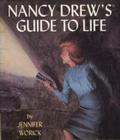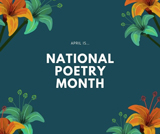Anyone who has read Chelsea Cain’s gory and intense thrillers about serial killer Gretchen Lowell could easily conclude that the author is a sordid woman who has an air of darkness. Anyone who has actually talked with her knows differently. Cain is lively, quick to smile, prone to self-deprecation and at the ready for a laugh.
In the latest book in her the series, The Night Season, it’s a new serial killer that Detective Archie Sheridan and Susan Ward, the outspoken Oregon Herald reporter, are hunting down. As in the other novels, Portland is center stage for the killings. This time the city is threatened by devastating flooding due to torrential downpours. The murderer, an aquarium enthusiast, uses the roar of the rain and the chaos of people scrambling to blockade the banks of the rising Willamette River to his advantage. The gore is toned down in The Night Season, but the killer’s methods are no less shocking.
Cain grew up in Bellingham, WA, and spent a lot of time at Village Books, one of town’s independent bookstores. The owners, Chuck and Dee Robinson, fondly remember her coming to the store, a little girl with a strong imagination, comfortable roaming around by herself. It’s certainly not a stretch that Cain has become a New York Times bestselling author (yes, all four books in the Gretchen Lowell series have been bestsellers!). She now lives in Portland, OR.
Cain is currently on tour for The Night Seasonand took some time to answer questions.
 The killer’s method in The Night Season is very original, to say the least. Without giving away too much, what sparked that idea for this book? I wanted a good way to kill people that wouldn’t be as graphically violent as in my previous books but would still be really scary and horrible. Ergo, lots of drowning and poisoning.
The killer’s method in The Night Season is very original, to say the least. Without giving away too much, what sparked that idea for this book? I wanted a good way to kill people that wouldn’t be as graphically violent as in my previous books but would still be really scary and horrible. Ergo, lots of drowning and poisoning.You do a great job describing the flooding that’s happening in Portland in The Night Season. Was that a detail that came into play after you had already started writing the book, or was it something that kicked off the rest of the story? I knew I wanted to incorporate the story of Vanport, a town that was swept away from north Portland when a levee broke in 1948. I knew I wanted a body to be found in the present day that may or may not be a victim of the Vanport flood. So once I’d figured that out, it seemed only natural that it would be a present-day flood that would reveal the old skeleton. The present-day flood was going to be background, but the more I wrote, the more it sort of took over the story.
 The crime scenes are often set in actual places in very specific locations in Portland. Do you find it difficult to walk around the city without visualizing these crime scenes or setting the scenes for your future books? I walked around looking for the perfect place to dump a dead body years before I started writing thrillers, and I am still looking for a place to dump a dead body. That’s just smart, because you never know. Maybe I read too many Nancy Drew books as a kid, I don’t know, but even back then I half-expected to find a corpse every time I went for a walk. It didn’t bother me. I was sort of disappointed every time I got home without having found one. But the result is that when I had to start dumping corpses in thrillers, I knew all the good places. That said, I am always on the look-out. I was up at Timberline Lodge at Mount Hood a few years ago with my husband and small child. We were eating lunch at the restaurant, and I looked up and said, “I’m going to kill somebody here.” And everyone around us got really quiet. I meant kill somebody in a book. In a book, people! I realized that I had to watch what I said after that.
The crime scenes are often set in actual places in very specific locations in Portland. Do you find it difficult to walk around the city without visualizing these crime scenes or setting the scenes for your future books? I walked around looking for the perfect place to dump a dead body years before I started writing thrillers, and I am still looking for a place to dump a dead body. That’s just smart, because you never know. Maybe I read too many Nancy Drew books as a kid, I don’t know, but even back then I half-expected to find a corpse every time I went for a walk. It didn’t bother me. I was sort of disappointed every time I got home without having found one. But the result is that when I had to start dumping corpses in thrillers, I knew all the good places. That said, I am always on the look-out. I was up at Timberline Lodge at Mount Hood a few years ago with my husband and small child. We were eating lunch at the restaurant, and I looked up and said, “I’m going to kill somebody here.” And everyone around us got really quiet. I meant kill somebody in a book. In a book, people! I realized that I had to watch what I said after that.
 You include very specific statistics in your books. For example, in The Night Season you mention how electrocution is the second leading cause of death during floods. How much research do you put into your books? Do you hear a statistic and think, “I need to include that” or do you create a storyline and think “I need to find some statistics to back this up?” A little of both. I am always coming across odd little facts that I squirrel away so that Susan can spout them. The great thing about Susan is that she’ll say anything at any time—she doesn’t need a context. Other trivia I come across as I’m researching say, drowning, or whatever, and I think, ooh, I have to work that in because it is awesome. But I’ve never actually written a scene just so I can fit in some random fact about how many people choke on ballpoint pens and die a year (answer: lots!)
You include very specific statistics in your books. For example, in The Night Season you mention how electrocution is the second leading cause of death during floods. How much research do you put into your books? Do you hear a statistic and think, “I need to include that” or do you create a storyline and think “I need to find some statistics to back this up?” A little of both. I am always coming across odd little facts that I squirrel away so that Susan can spout them. The great thing about Susan is that she’ll say anything at any time—she doesn’t need a context. Other trivia I come across as I’m researching say, drowning, or whatever, and I think, ooh, I have to work that in because it is awesome. But I’ve never actually written a scene just so I can fit in some random fact about how many people choke on ballpoint pens and die a year (answer: lots!) I’m never the person who has solved the crime before the end of the book or movie, so I’m fascinated by people who can create these crime scenarios from scratch. What is your method of creating a crime and solving it? I am totally the person who can name the killer in the first scene. It makes my husband crazy. I have a good instinct for crime, should this whole thriller writing thing dry up. I think I’ve just read so many thrillers and mysteries and seen so many cop shows and crime movies and episodes of Perry Mason that those neural pathways have been burned into my brain. And crime is such pure narrative. It’s a set-up and a conflict and a resolution, one, two, three. I am also an avid reader of the Metro section of my daily newspaper, an epic source of weird little crime stories. So between the Metro section and a ton of French New Wave heist movies floating around in my head, I can knit a good murder together from scratch pretty quickly. Writing a book is a lot like committing a crime, actually. You plot some big action, and then spend a ton of time trying to figure out how to get out of it, and eventually either bring all the pieces together and get away with it, or turn yourself in and give back the money.
 As a writer of thrillers, are you also a reader of thrillers, or do you find you need a reprieve? If so, what types of books do you like to read? I read all over the place. Right now I’m reading a book called The Dead Janitors Club, a memoir by a crime scene clean-up specialist. Not a thriller, but certainly gory. I read a lot of nonfiction, not just crime-related. And I read a lot of lyrical fiction and poetry. I also love me some thrillers. And PI books. I love books about private investigators. But when I think about my favorite thrillers, or PI books, they are all series. I don’t read a lot of stand-alone. I think part of the pleasure is that I get to go back to the characters again and again. Some of my favorites are Raymond Chandler, Dashiell Hammett, Robert B. Parker, Val McDermid and Jonathan Kellerman.
As a writer of thrillers, are you also a reader of thrillers, or do you find you need a reprieve? If so, what types of books do you like to read? I read all over the place. Right now I’m reading a book called The Dead Janitors Club, a memoir by a crime scene clean-up specialist. Not a thriller, but certainly gory. I read a lot of nonfiction, not just crime-related. And I read a lot of lyrical fiction and poetry. I also love me some thrillers. And PI books. I love books about private investigators. But when I think about my favorite thrillers, or PI books, they are all series. I don’t read a lot of stand-alone. I think part of the pleasure is that I get to go back to the characters again and again. Some of my favorites are Raymond Chandler, Dashiell Hammett, Robert B. Parker, Val McDermid and Jonathan Kellerman. What’s the last book you couldn’t put down? That’s hard. I really really loved Stiff by Mary Roach. It’s a nonfiction narrative about what we as a culture do with dead bodies. It’s the funniest book you’ll ever read about corpses. I read it on a plane a few years ago and was laughing so hard I got embarrassed and considered putting it away. But then I thought, screw it, I don’t care, and there’s no way I can stop reading it. I was on my way to Europe for a book tour and I ended up giving it to a Norwegian reporter who asked me what I was reading and then had to listen to me rave about Stiff for 45 minutes. Later I remembered that I had made all these notations in the margins of the book and underlined all sorts of horrific passages. So she probably thinks I’m a total psycho.
What’s the last book you couldn’t put down? That’s hard. I really really loved Stiff by Mary Roach. It’s a nonfiction narrative about what we as a culture do with dead bodies. It’s the funniest book you’ll ever read about corpses. I read it on a plane a few years ago and was laughing so hard I got embarrassed and considered putting it away. But then I thought, screw it, I don’t care, and there’s no way I can stop reading it. I was on my way to Europe for a book tour and I ended up giving it to a Norwegian reporter who asked me what I was reading and then had to listen to me rave about Stiff for 45 minutes. Later I remembered that I had made all these notations in the margins of the book and underlined all sorts of horrific passages. So she probably thinks I’m a total psycho.
Your writers group is replete with big wigs in the literary world. What’s some of the best advice you’ve gotten from your cohorts? They are all so smart and full of zingers. Chuck Palahniuk is great with objects. He taught me to use objects more and better. Archie’s pillbox in the earlier books, for instance. It’s such great shorthand for what’s going on in his head. How Archie interacts with and thinks about that pillbox ends up being way more revealing than anything he says. And Chuck taught me to go back to The Object at least three times in a chapter. “Don’t lose your objects,” he always says. This is a Dangerous Writer-ism, something Chuck picked up from his old mentor Tom Spanbauer and his Dangerous Writing workshop. Suzy Vitello taught me to take time to reveal a character’s emotional landscape. Don’t wallow in it. But take half a paragraph and unpack (“unpack” – that’s another Dangerous Writer-ism) the goods. Let the reader inside. I’m not talking about exposition. No telling. Just going internal and showing what a character has at stake emotionally. Lidia Yuknavitch teaches me words. She can use words like no one I’ve ever met. Monica Drake taught me to take time with dialog. Her gift for dialog and her sense of timing are amazing. Mary Wysong taught me the power of the smallest gesture. Describing how a character hunches his shoulders or holds a coffee cup can speak volumes. Erin Leonard taught me to embrace absurdity. Cheryl Strayed is incredible at creating small profound moments, and she is such a hard worker and so productive. They all make me feel like an underachiever.



